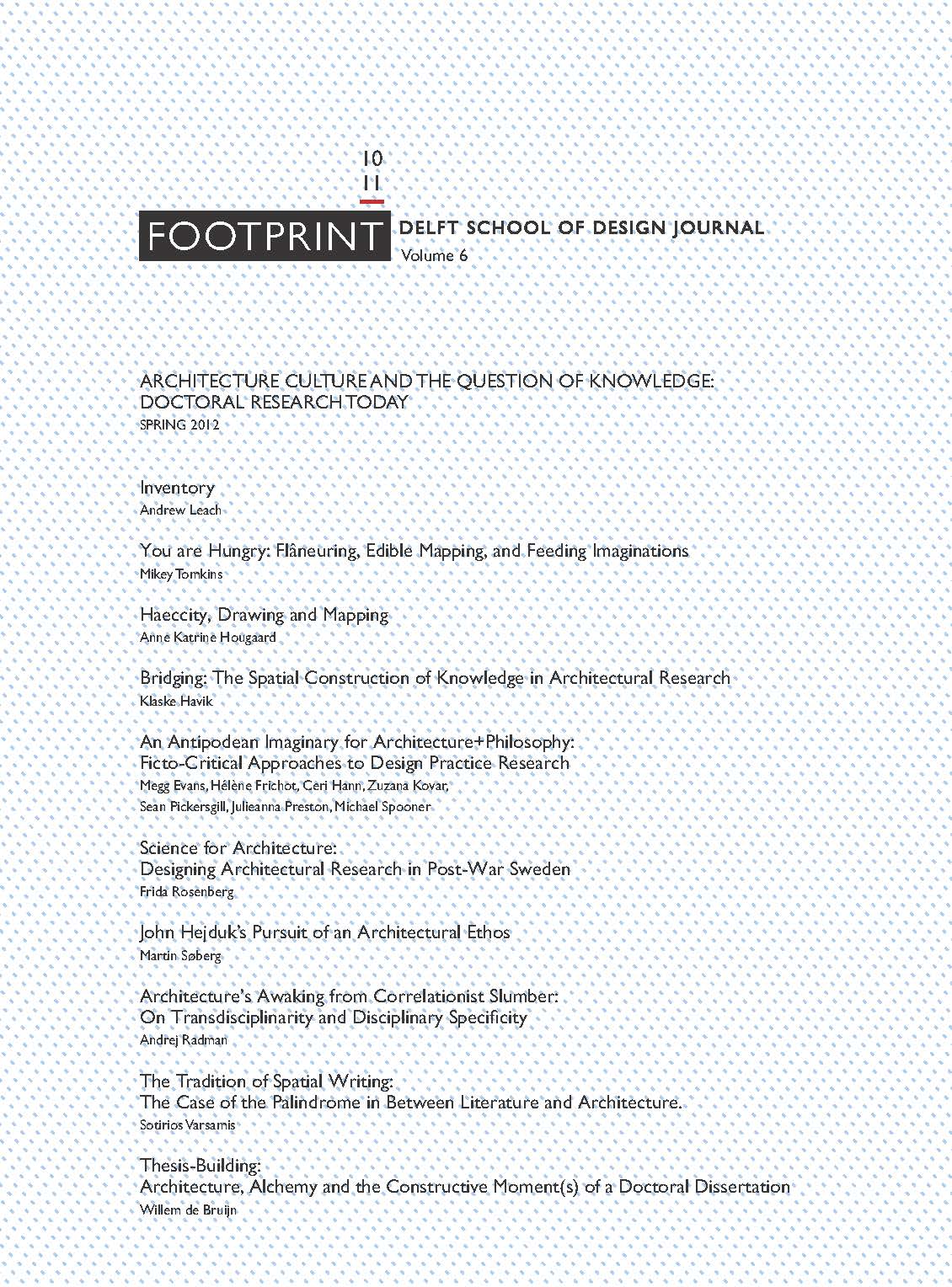Issue # 10/11 | Spring 2012 | Architecture Culture and the Question of Knowledge: Doctoral Research Today

Over the past fifteen years most advanced education programmes within Schools of Architecture have been questioning the parameters and requirements of doctoral research both in terms of content and form. This double issue of Footprint was motivated by the question of where the field stands today. Footprint 10|11 presents nine contributions from both recently defended and developing PhD candidates from a variety of institutions. The diversity of their work, as well as the similarities found in the submissions, offers a partial view into research topics currently addressed in PhD programmes within Schools of Architecture.
In addition to the nine papers by PhD researchers, we have included a paper by Andrew Leach that we believe provides an overview of the general state of contemporary architecture research. Leach makes an appeal to refrain from making all research operational. At a time when the application of research and its economic value seem to form the primary criteria for judging value, this appeal should not be taken lightly.
Issue's editors: Deborah Hauptmann and Lara Schrijver




